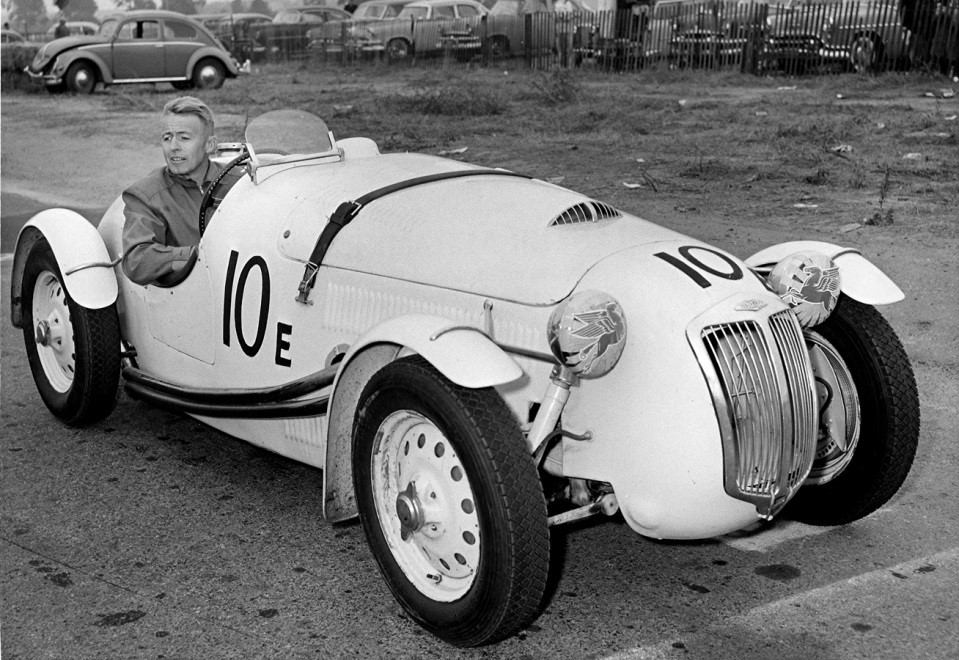
| Dates of production | October 1948 to January 1954 |
|---|---|
| Body Type | narrow open 2-seater sports with cycle-wing mudguards |
| Engine | Bristol 6-cylinder 2-litre (1971 cc) |
| No. manufactured | 34 |
The first car was displayed at the London Motor Show in October 1948 and featured a narrow 2-seater aluminium racing body. The first 2 cars built in 1948 featured narrow upright radiator grilles and small low-set headlamps. From 1949 the cars had larger headlamps higher up flanking a wider grille. Initially known as the ‘High Speed Competition Model’, after the fourth car built finished 3rd in the 1949 Le Mans 24-hour race, the name for the subsequent cars was changed to ‘Le Mans Replica’ in recognition of that achievement.
All cars used the Bristol 2-litre engine developed from the pre-war BMW 328, a Bristol gearbox and front and rear suspension based on that used by the 1930s BMWs. The first 26 cars were built on an A-shaped tubular chassis with a Bristol rear axle. The final 8 cars used a revised parallel-tube chassis developed for the 1952 single-seater cars with an Austin rear axle, except for the last 2 which were fitted with a de Dion rear axle and wire wheels.
Two spare unsold chassis built in 1954/55 were sold off in the 1960s and subsequently built up to ‘Le Mans Replica’ specification.The ‘Drophead Coupé’ built in 1951 and all three single-seaters built in 1952 have also been converted to ‘Le Mans Replica’ specification, making a total of 40 genuine Frazer Nash chassis with Le Mans Replica-type bodies. However one ‘Le Mans Replica’ was rebuilt by the works as a ‘Targa Florio’ in 1953, another was given a Mille Miglia-style body in the early-1960s and several cars have been lost after racing accidents. So the current total is closer to 30.
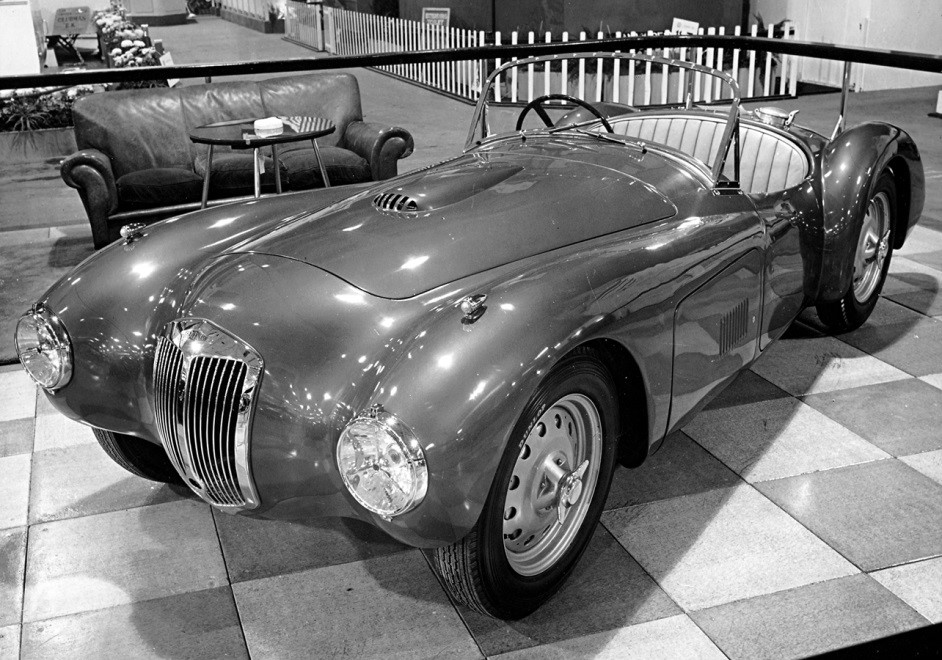
| Dates of production | September 1949 to February 1953 |
|---|---|
| Body Type | open 2-seater sports with full-width body |
| Engine | Bristol 6-cylinder 2-litre (1971 cc) |
| No. manufactured | 11 |
The ‘Mille Miglia’ was designed by Fritz Fiedler who had been chief engineer at BMW during the 1930s. He joined AFN in 1947 and was responsible for the development of the post-war Frazer Nash until he returned to Germany in 1950. An early prototype built in 1947 was sent to Italy to be bodied by ‘Touring Superleggera’ of Milan, displayed at the 1948 Geneva Show and sold to the Shah of Iran. This was followed by the ‘Fast Tourer’ displayed at the London Motor Show in 1948 and then the ‘Mille Miglia’ in 1949.
The first ‘Mille Miglia’ was displayed at the London Motor Show in September 1949 and featured a low streamlined aluminium body on the same A-shaped tubular chassis as the ‘Le Mans Replica’. The first 4 cars had rectangular radiator grilles and were built with the chassis extended under the rear axle to lower the car’s height. The next 6 cars had the usual upright grilles and normal chassis. The final ‘Mille Miglia’ was built on the parallel-tube chassis and was essentially a revised ‘Targa Florio’. All but 2 cars carried the spare wheel in the front nearside wing to give more luggage capacity in the boot.
A ‘Le Mans Replica’ was rebodied in the early-1960s with a Mille Miglia-style body, making a total of 14 genuine Frazer Nash chassis with Mille Miglia-type bodies including the ‘Touring Superleggera’ and the ‘Fast Tourer’. All still survive except the ‘Touring Superleggera’ which is presumed lost in Iran.
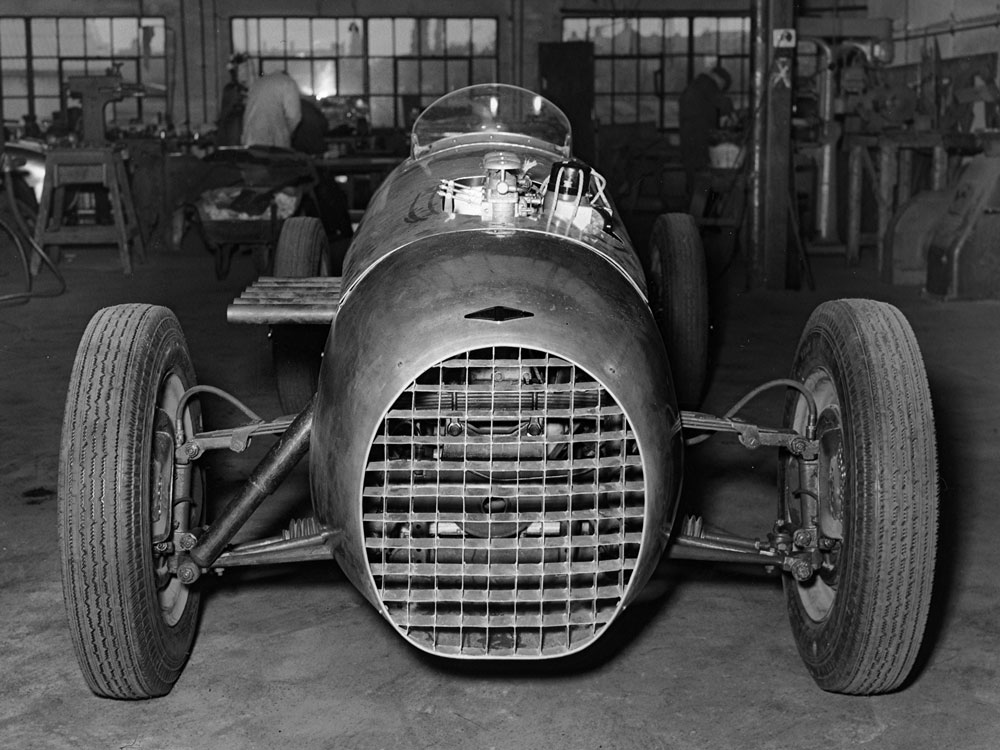
| Dates of production | February to August 1952 |
|---|---|
| Body Type | racing single-seater with central driving position |
| Engine | Bristol 6-cylinder 2-litre (1971 cc) |
| No. manufactured | 3 |
Built in 1952 to Formula 2 regulations on a narrow parallel-tube chassis developed in 1951. The centralised driving position meant that the driver had to sit relatively high over the prop shaft. These purpose-built F2 cars were lighter than the ‘Le Mans Replicas’ which also raced in Formula 2 with lights and mudguards removed.
All three single-seaters have now been converted to 2-seater ‘Le Mans Replica’ specification.
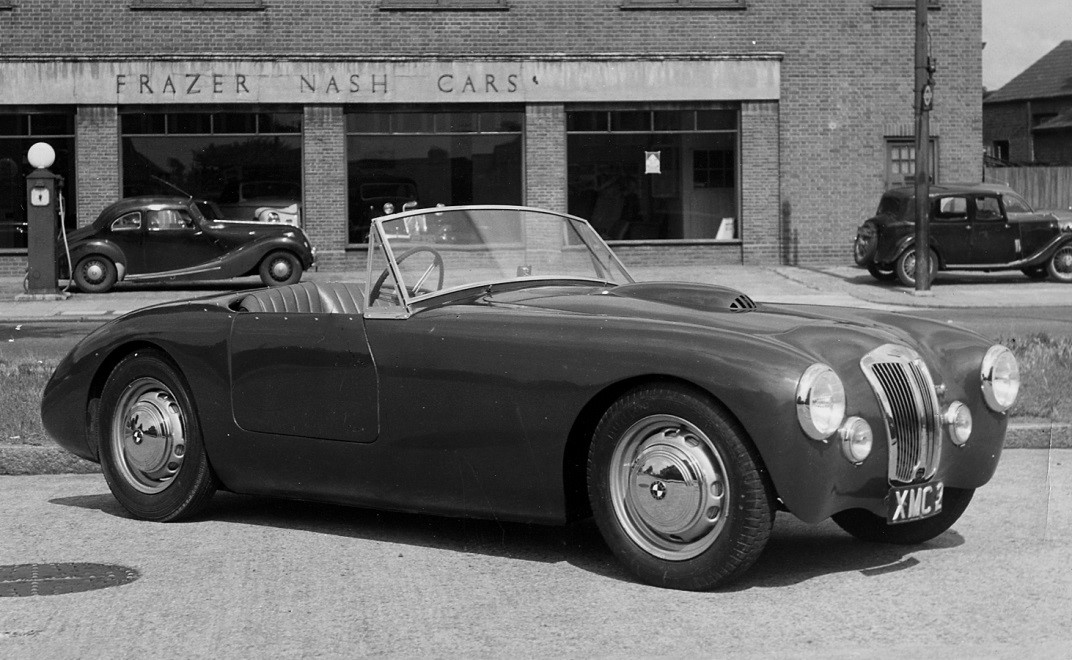
| Dates of production | April 1952 to June 1954 |
|---|---|
| Body Type | open 2-seater sports with full-width body |
| Engine | Bristol 6-cylinder 2-litre (1971 cc) |
| No. manufactured | 14 with Bristol engine & 1 with Austin 4-cylinder (2660 cc) engine |
The ‘Targa Florio’ was built on the parallel-tube chassis developed in 1951 for the single-seaters and used Austin front hubs, rear axle and wheels. It featured a simpler, smoother body shape than the ‘Mille Miglia’ with a curved windscreen and made a comfortable touring car with a more spacious cockpit and boot, although the spare wheel was in all cases bar one housed in the boot. The third car built was fitted with an Austin A90 4-cylinder engine and displayed at the 1952 London Motor Show. It was however trumped by the cheaper Healey 100 which Austin adopted to make the Austin-Healey and so no more Austin-engined Nashes were produced.
The final 5 cars used a revised body shape after a customer admired the ‘Le Mans Coupé’ and requested an open version. These cars have longer, larger boots, a totally different nose and radiator grille arrangement similar to the coupé and wire wheels.
One ‘Le Mans Replica’ was rebodied in 1953 with an early-type ‘Targa Florio’ body to improve its top speed for racing, making a total of 11 early-type bodies (including one with Austin engine) and 5 later-type bodies. All but two still survive.
| Dates of production | April 1953 to October 1955 |
|---|---|
| Body Type | closed 2-seater fixed head coupé |
| Engine | Bristol 6-cylinder 2-litre (1971 cc) |
| No. manufactured | 9 |
The ‘Le Mans Fixed Head Coupé’ was built as a streamlined car suitable for racing at fast circuits such as Le Mans. It used the parallel-tube chassis from the single-seaters and ‘Targa Florios’ and featured wire wheels for the first time. It introduced a new style of nose and radiator grille to improve engine cooling, which was then used on the later ‘Targa Florios’ and the ‘Sebring’.
All nine cars still exist, although one has been fitted with an open glass fibre body following a racing accident.
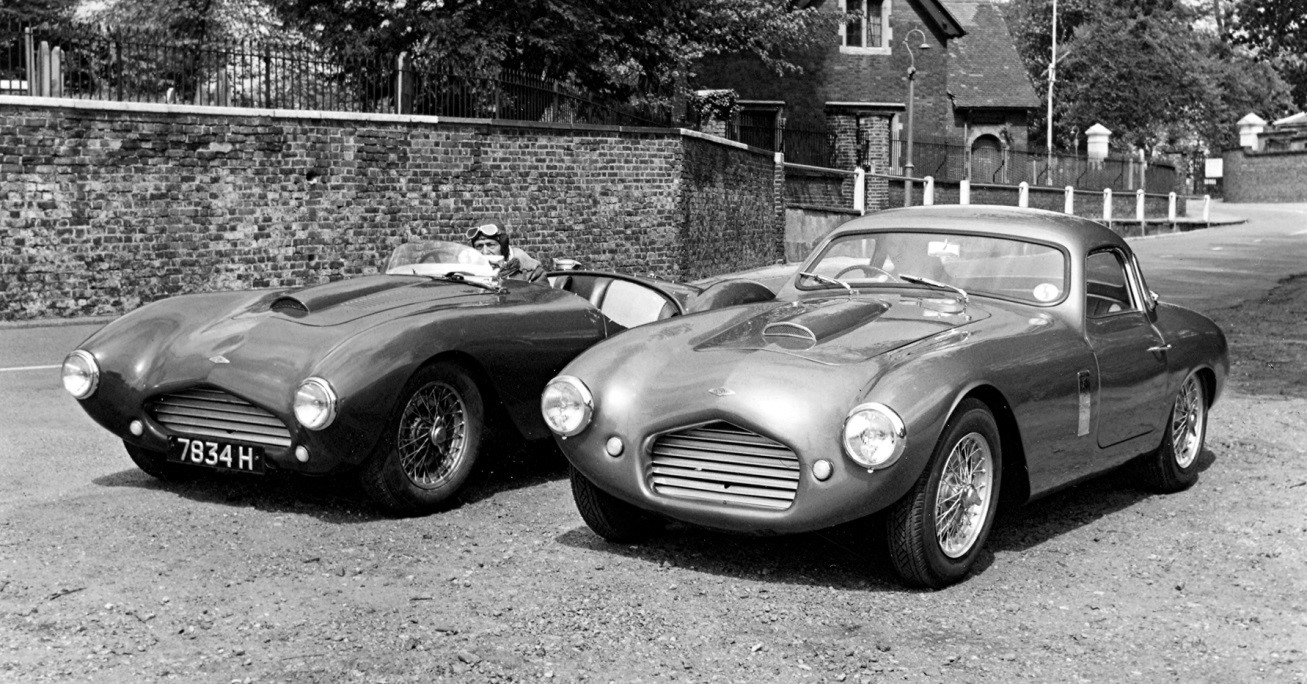
| Dates of production | June to November 1954 |
|---|---|
| Body Type | open 2-seater sports with full-width body |
| Engine | Bristol 6-cylinder 2-litre (1971 cc) |
| No. manufactured | 3 |
The ‘Sebring’ was introduced in 1954 to replace the ‘Le Mans Replica’ as the prime racing model. The body shape was a mix of ‘Le Mans Coupé’ nose and grille with ‘Mille Miglia’ style tail. The parallel tube chassis and wire wheels were utilised and in 2 of the cars, a de Dion rear axle. One car had revised front suspension featuring coil springs and double wishbones instead of the usual transverse leaf spring and wishbone copied from the 1930s BMWs. All 3 cars still survive.
| Dates of production | October 1957 |
|---|---|
| Body Type | closed 2-seater fixed head coupé |
| Engine | BMW 8-cylinder 2.6-litre (2580 cc) |
| No. manufactured | 1 |
The ‘Continental Coupé’ was the last Frazer Nash built by the factory and was displayed at the 1957 and 1958 London Motor Shows. It featured a revised tubular chassis, both wider and longer, with coil spring and wishbone front suspension and de Dion rear axle. A 2.6-litre V8 BMW engine from the BMW 503 was fitted, later replaced by a 3.2 litre from the BMW 507. The unique body was a mixture of aluminium nose and tail together with a Porsche 356 steel centre section (roof, doors & windows). The grille reverted to a small upright item similar to the early ‘High Speed’ model. The car still exists.